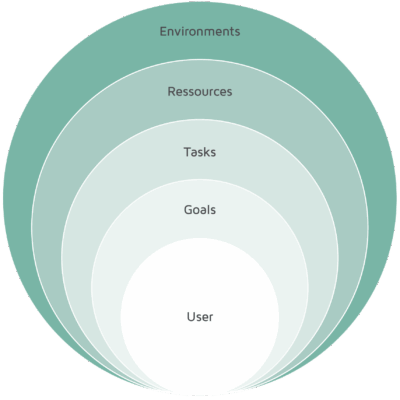User Research
Understanding Users
In the run-up to any development, we conduct user research so that we get to know the exact tasks, goals and needs of the target group. Important questions are in the foreground: Who are the users? What tasks do they want to solve with the software? What problems do they currently have? How do we create added value for these users? Based on the resulting findings, a product is created from which all user groups benefit.

A key component for answering our questions is the interview, which is best done contextually, i.e., at the workplace of the person being interviewed. However, conducting focus groups and subsequently developing personas and user journey maps is also part of the UX methods of user research.
Questions in User Research
- Who are the users?
- What tasks do you want to solve with the software?
- What problems do they currently have?
- How do we create added value for these users?
Our UX-experts are glad to consult you!
We help you conduct successful user research in your project and apply the right UX methodology to achieve your project objectives.

Interviews
The most common method to collect empirical information and data about users is the interview. With the help of targeted questions, our UX/UI professionals gain insight into how users work and the context of use that affects the existing or future software.
Asking users early in the development process about how they work and what they need to complete their tasks ensures that the software being developed meets their needs and they can work with it effectively and efficiently. The insights gained are incorporated into personas or user journeys and provide the basis for good UX/UI design.
Focus Groups
A targeted discussion with users on a specific topic of the application to be implemented is also called a focus group. They are particularly useful when ideas are to be developed or a deep understanding of the context of use is to be worked out from different perspectives.
The collected results of a focus group are then analyzed by our UX/UI experts for possible needs and requirements of the users for the software and recommendations for action are communicated to the customer. As in interviews, the information gained here is incorporated into personas and user journeys.

Personas
To illustrate the diversity of user groups and their requirements, personas, i.e. fictitious users, are created from data and insights about them. Each persona has characteristic needs and represents a specific type of user, e.g., in terms of age, gender, or other relevant characteristics related to the context of use.
Personas give users a face so that all project participants can develop an idea of who the future users of an interactive system are, what characteristics they have, what motivates them, and what goals they pursue. They should therefore be consulted repetitively in discussions about features during development.
User Journeys
User journeys are the best way to illustrate all the points at which users encounter the software before, during and after use. They help to make the user experience comprehensible not only for the development team, but also for third parties, such as stakeholders, since a lot of information about the context of use is presented in a simplified way.
In addition to the individual steps that are traversed, the user journey is enriched with emotions, thoughts, and needs to make it easier to empathize with the users. It also highlights opportunities and possibilities for customers to improve the existing process.
Alongside the creation of personas, the development of user journeys is a typical method used in our UX workshops for user research. User journeys can show the user experience as a whole or be assigned to a persona.








